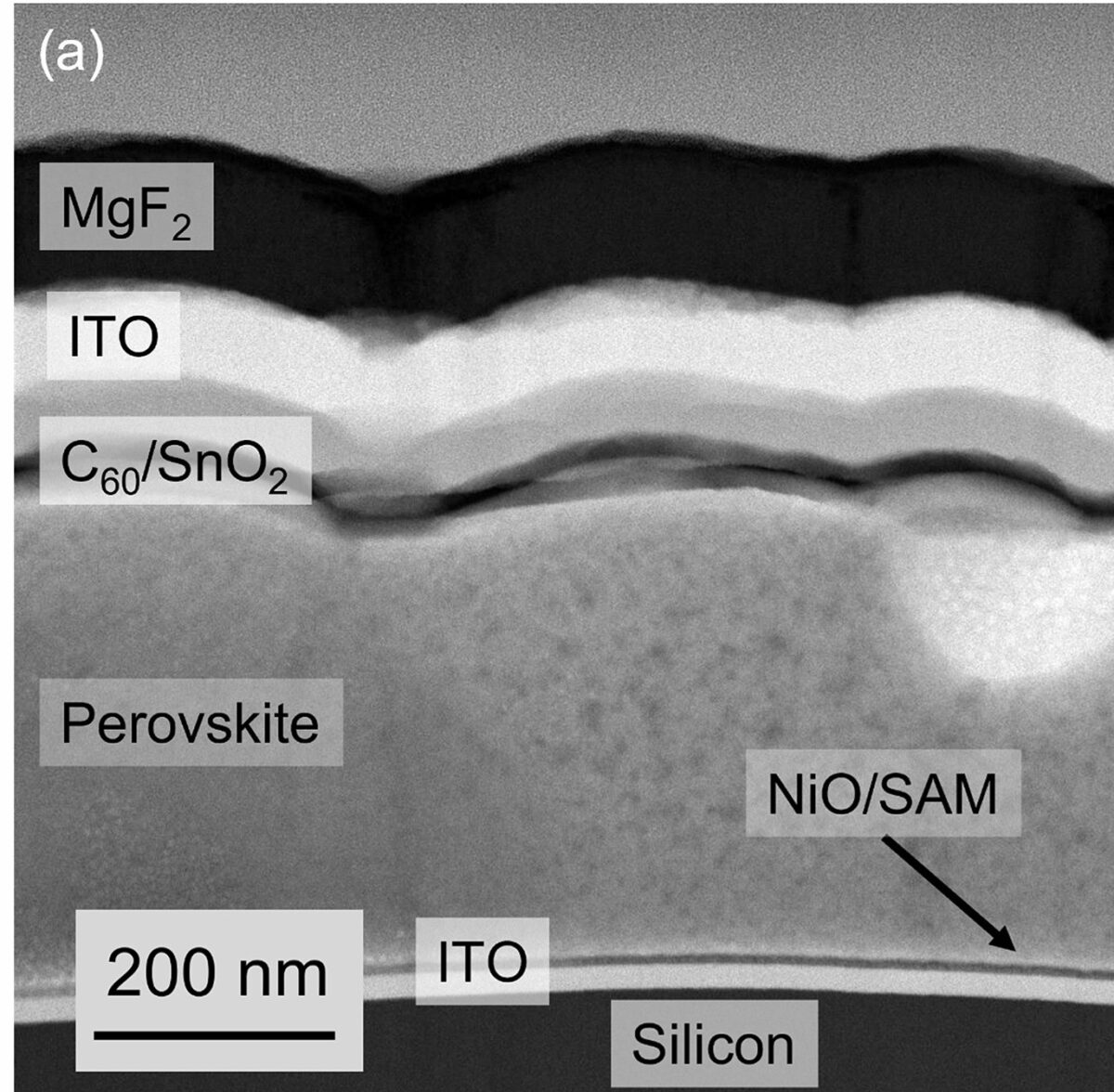
They explained that usually TRJs are based on ITO and 2PACz alone, and that the addition of the NiO layer is intended to reduce electrical shunts in the perovskite top cell, due to the inhomogeneity of the 2PACz layer on ITO.
The group deposited the NiO layer through atomic layer deposition (ALD), which they claim largely improves the uniformity of coverage of the self-assembled monolayer (SAM) of the TRJ.
The researchers built the top perovskite cell with the proposed TRJ, a perovskite absorber, an electron transport layer based on buckminsterfullerene (C60) and tin(IV) oxide (SnO2) layer, an ITO layer, a silver (Ag) metal contact, and an antireflective coating based on magnesium fluoride (MgF2).
“The SnO2 is fabricated on a C60 layer, which is needed to prevent the direct interaction between the ALD precursor and the perovskite layer that can reduce the device performance,” they explained.
The academics tested the performance of the cell under standard illumination conditions and compared it with that of a reference device with a TRJ based only on ITO and 2PACz.
The test showed that the reference cell was able to achieve a power conversion efficiency of 24.2%, an open-circuit voltage of 1.689 V, a short-circuit current density of 18.6 mA/cm2, and a fill factor of 76.9%, while the device based on the novel TRJ reached an efficiency of 23.7%, an open-circuit voltage of 1.705 V, a short-circuit current density of 18.0 mA/cm2, and a fill factor of 77.2%.
The Dutch team explained that, despite the slightly lower efficiency, the cell using the new TRJ technology offers the advantage of the uniform coverage of the SAM and narrower device efficiency distribution, which it said will be highly beneficial when scaling up to larger cell sizes. “When ALD NiO is introduced between ITO and 2PACz, the spread of the device performance decreases, and the cells operate uniformly across different devices within a batch and from batch-to-batch,” it stated.
The solar cell tech is described in the study “Atomic layer deposition of NiO applied in a monolithic perovskite/PERC tandem cell,” published in Solar Energy Materials and Solar Cells. The researchers come from the Eindhoven University of Technology and the Netherlands Organisation for Applied Scientific Research (TNO).